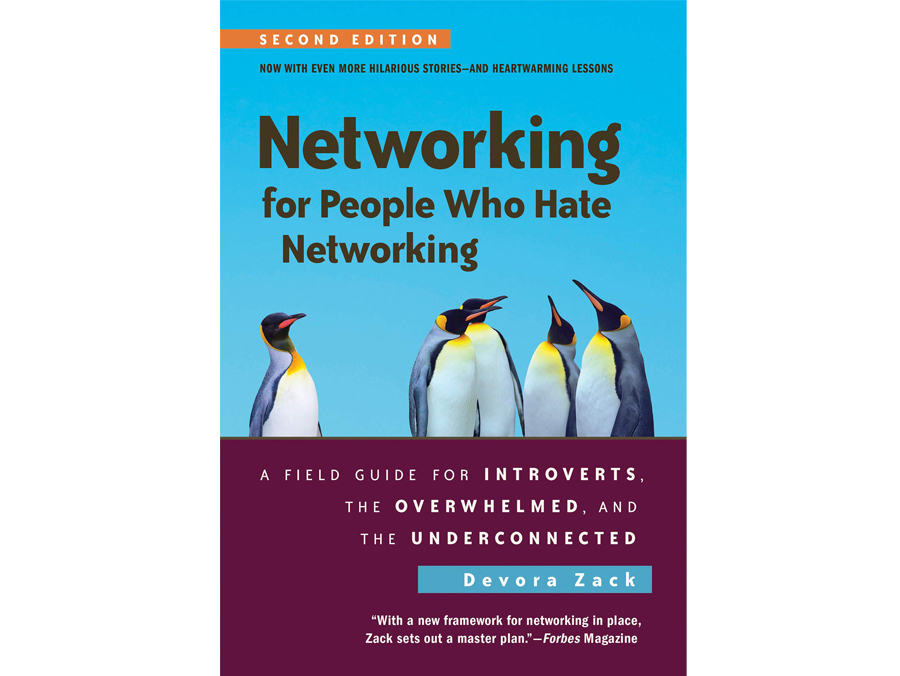Reviewed by Susan Fader, Fader & Associates, Teaneck, NJ, susanfader@faderfocus.com
According to the Myers-Briggs Type Indicator Manual, less than fifteen percent of the
population are hardwired to network. But it seems like books, articles, and blogs offering networking advice are written for those who are already predisposed to networking. So, what about the other eighty-five percent? Devora Zack, the author of Networking for People Who Hate Networking: A Field Guide for Introverts, the Overwhelmed and the Underconnected, recognizes that traditional networking rules are “a bit like giving quiche recipes to people allergic to eggs and cheese.”
Whether you see yourself as an extrovert or introvert does have some impact on how you perceive your ability to network. However, Zack explains that very few people are a classic extrovert or introvert—rather, there is a fluidity to the spectrum with most of us falling into centroverts who may exhibit some extrovert behavior in certain situations. The author has a quick little test to help determine where you fall and her advice recognizes these spectrum nuances.
Networking was first published in 2010 and was translated into more than fifteen languages. This second edition is totally revised and updated with additional chapters and is a lifeline full of actionable advice and how-tos directed to people who hate networking. The author’s witty, fast-paced writing style, detailed short case studies, and concrete examples of what you can do in different networking situations translate into a very practical and helpful book.
Part of the barrier to networking is that, in networking situations, many people have difficulty starting a conversation, and the book is full of realistic advice and examples of conversation starters and how to continue a conversation in a range of situations.
Early on, Zack points out how “self-talk…how we speak to ourselves within our heads” is a key stumbling block to one’s ability to network, because when we do this, “themes emerge. Some patterns place a negative veneer on events,” which usually are an exaggeration of the impact of what occurred. Because of this, the author stresses the need to reframe because “whether you love, tolerate, or hate networking, (it) is directly correlated to your inner monologue. It is never too late to rewire your brain.” The author clearly lays out how to do this in a whole chapter devoted to helping you recognize your “networking misdemeanors” and how you can “scrub away these habits.”
Next up is a detailed Networking Event Survival Kit, which in itself is worth the price of the book. Subsequent chapters delve into the many networking subgroups and ways to make navigating them easier. While some of the advice may be obvious once you read it, Zack’s ability to clearly synthesize what will make networking easier and more effective is what makes this book so helpful. A few examples:
- Networking Events. Pre-register to volunteer to sign people in so you are put in natural situations to speak with people.
- Job Search. Networking is a major source of identifying job leads, but not many people realize that the actual job interview has a networking component. Also, where the interview might take place—video conference, in a restaurant, in an office—requires different networking skills. Read this chapter and find out why.
- Business Travel. Why you should talk to your seatmate on the plane and how you can start those conversations.
Of course, knowing how to schmooze is not enough, you have to follow up, and there is an entire chapter on how to follow up once you have made that initial contact.
After reading Networking cover to cover, you will probably want to keep it in arms’ reach to pull out and use as a quick refresher prior to going to a networking event.


Be the first to comment